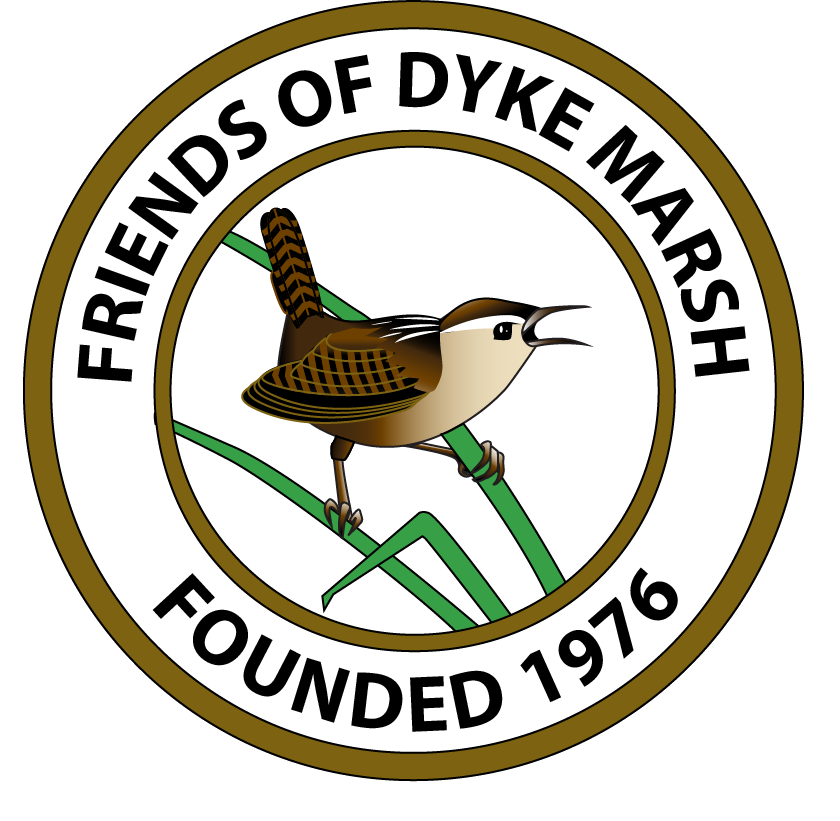On August 19, 2025, Brent Steury with the National Park Service led a walk in Dyke Marsh for 17 adults and ten youngsters. Steury is the Natural Resources Program Manager for the George Washington Memorial Parkway.
He started by reviewing the history of the marsh, explaining that Smoot Sand and Gravel dredged or mined it for pea gravel and sand from 1940 to 1972. Under their stabilization plan, NPS has constructed a breakwater and five sills to encourage sedimentation and to slow marsh erosion. More on marsh restoration.
Steury said that there are 1,330 vascular plants on the George Washington Memorial Parkway and that over 20 percent are invasive.
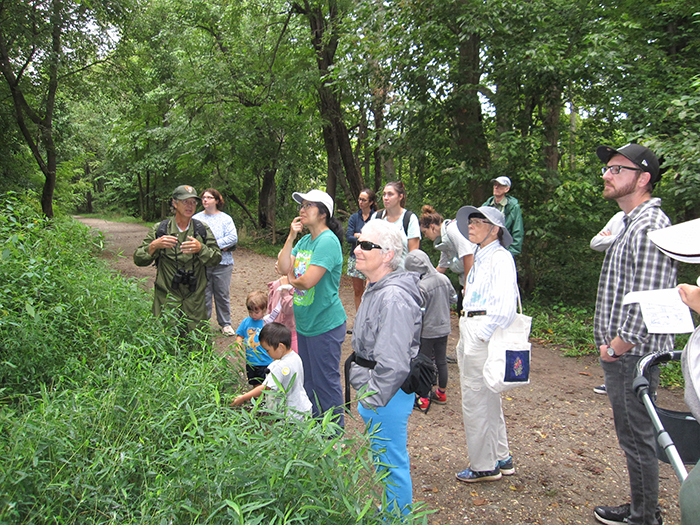 |
| The group studied plants along the Haul Road Trail for over two hours. |
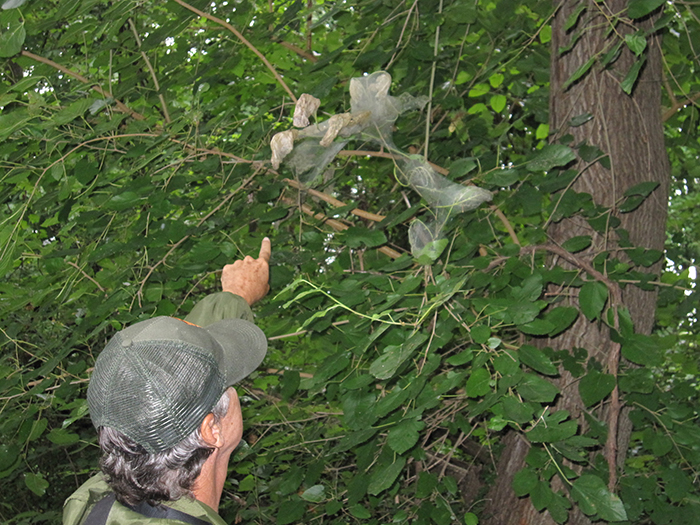 |
| The web of the fall webworm moth (Hyphantria cunea), full of caterpillars on a mulberry tree branch, fascinated all. |
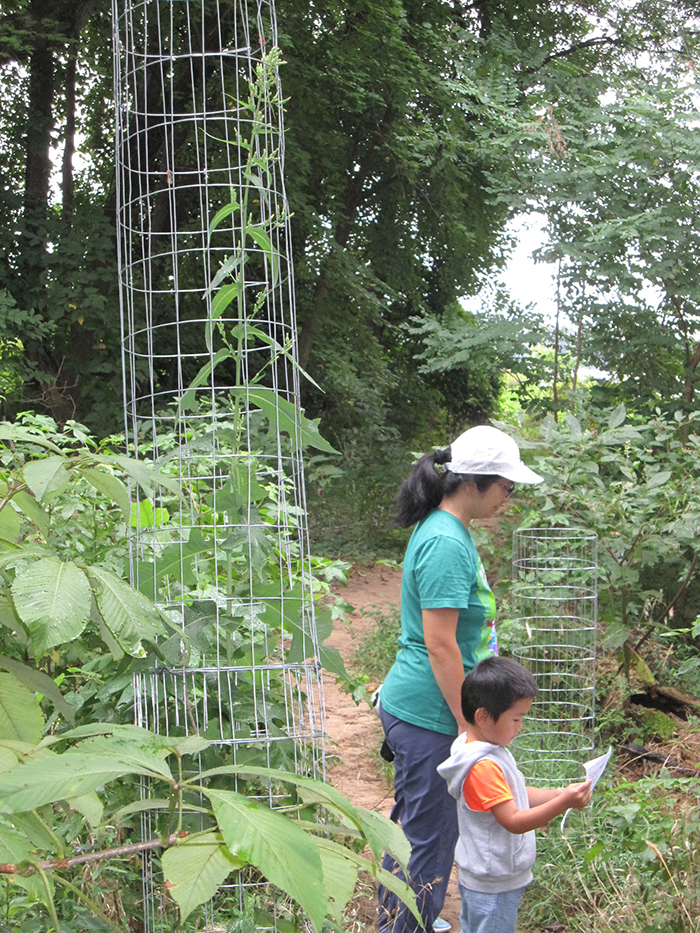 |
| FODMers have put temporary cages around some wild lettuce plants (Lactuca virosa) to protect them from deer browse. |
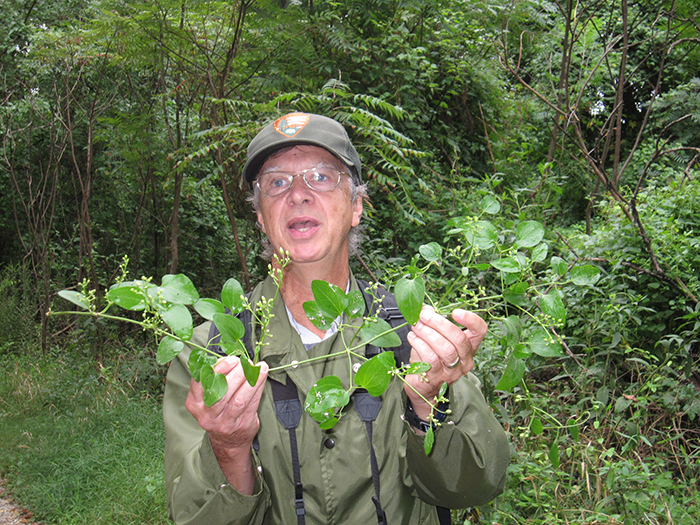 |
| Steury said that this clematis (Clematis terniflora) is from Asia. |
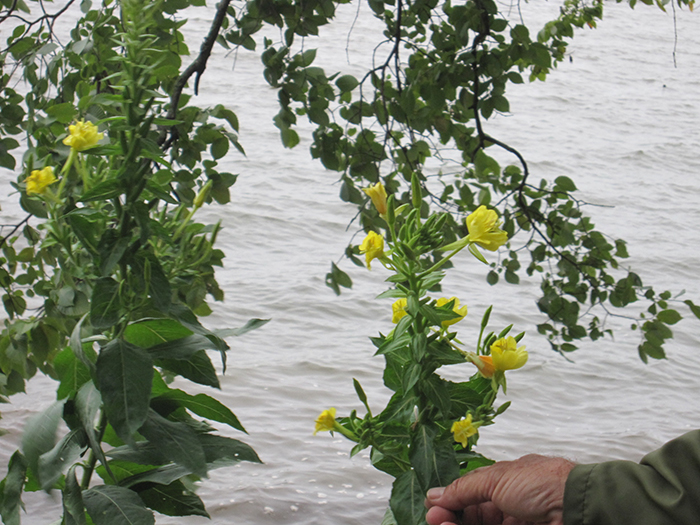 |
| The evening primrose (Oenothera bliennis) blooms at night, but since August 19 was a gray, overcast day, it was in bloom. |
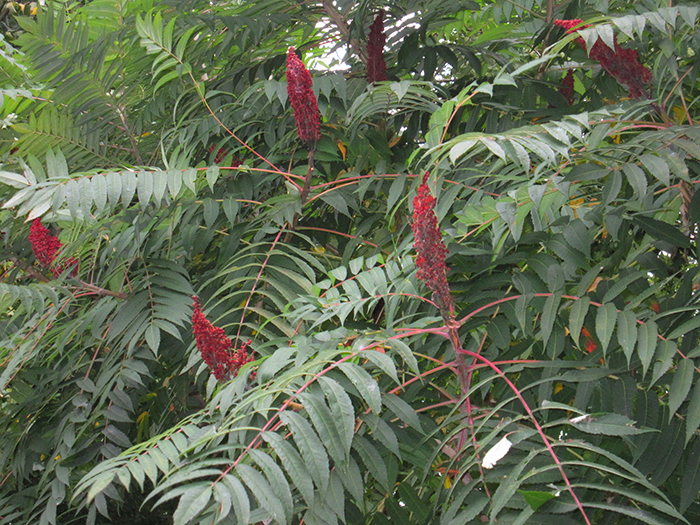 |
| For the entire GWM Parkway, the smooth sumac (Rhus glabra), with red berry clusters in the fall, is only found in Dyke Marsh. |
 |
| Steury invited participants to sniff the fragrant spice bush (Lindera benzoin). |
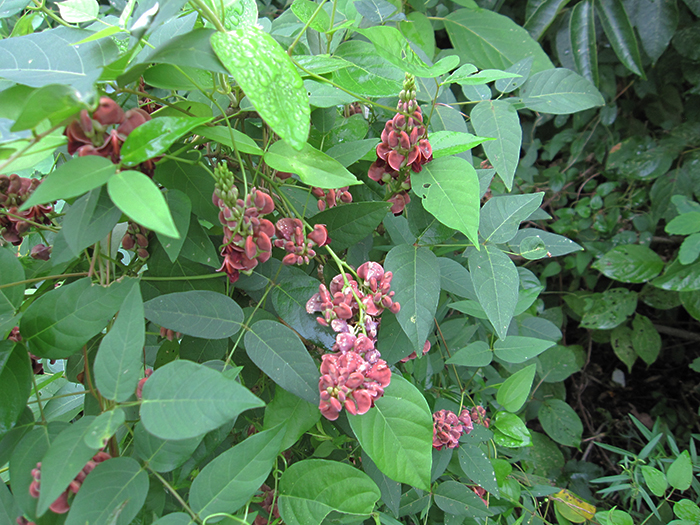 |
| Indigenous people dug up groundnut (Apios americana) tubers for food. The plant has reddish-purple, sweet-pea-like flowers. |
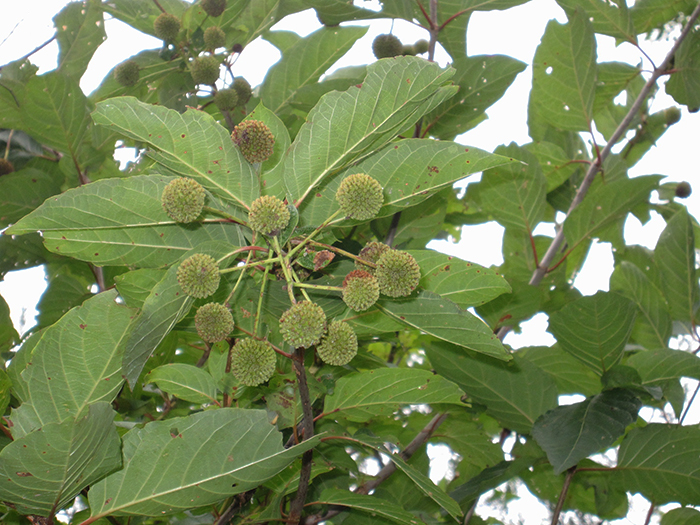 |
| The buttonbush (Cephalanthus occidentalis), a plant with a spherical flowers, had already flowered. |
 |
| Porcelainberry (Ampelopsis glandulosa), a very pervasive invasive plant, can smother trees and native vegetation. |
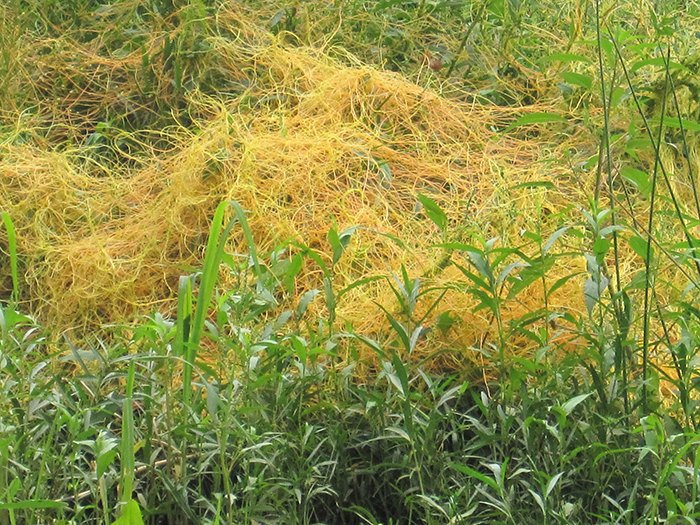 |
| Dodder, “the spaghetti plant,” is a parasitic yellow vine (genus Cuscuta). |
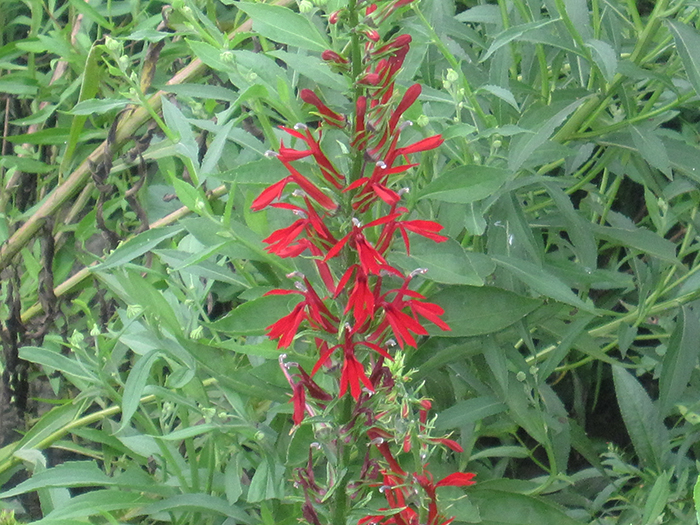 |
| The bright red cardinal flower (Lobelia cardinalis) grabbed everyone’s attention. |
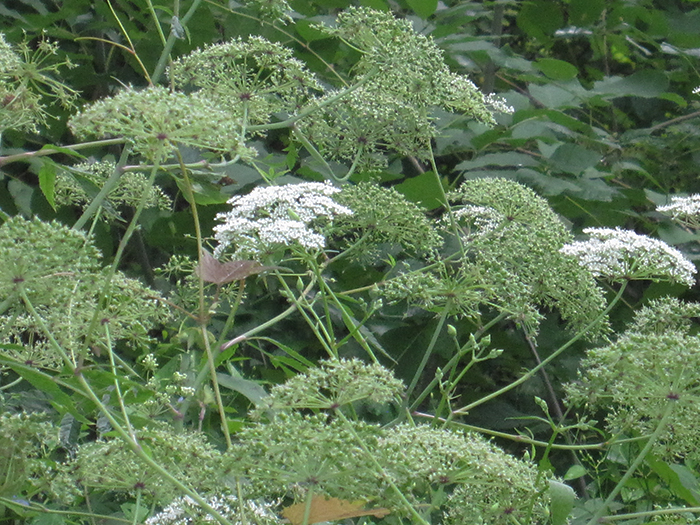 |
| The poison hemlock (Conium maculata) is perhaps what killed Socrates. |
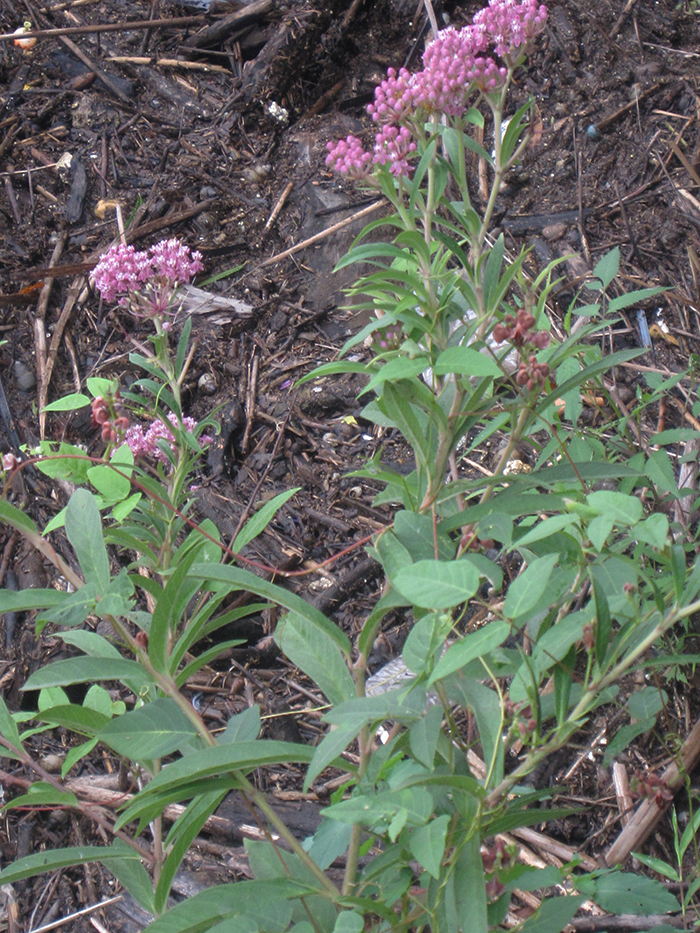 |
| Swamp milkweed (Asclepias incarnata) was in bloom near the boardwalk. |
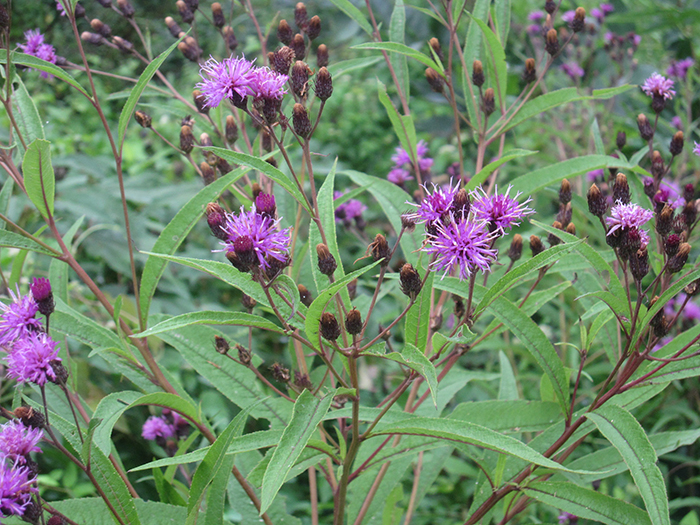 |
| Ironweed (Vernonia gigantea), which likes wet soil, had stunning purple blossoms. |
